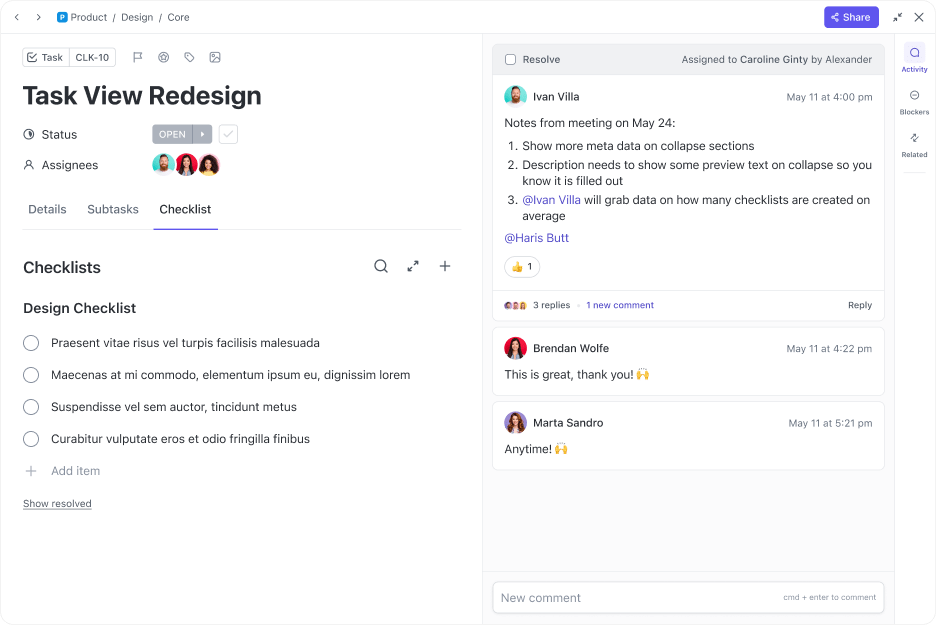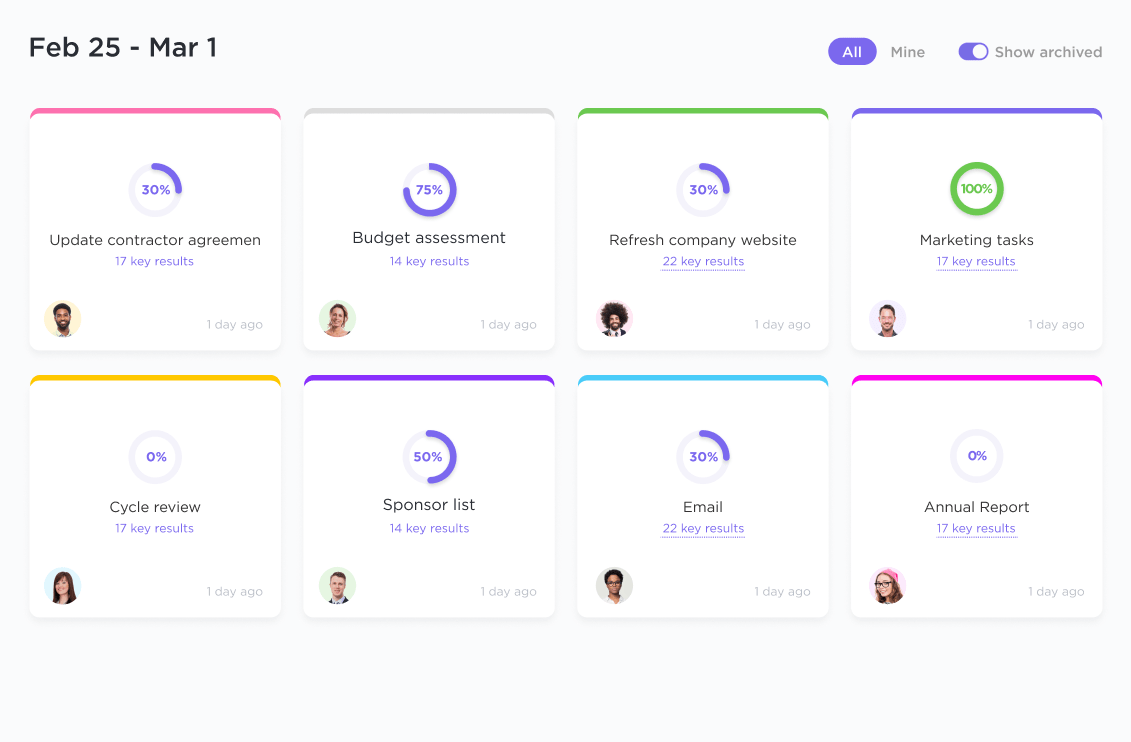20 Best Exit Interview Questions to Ask

Sorry, there were no results found for “”
Sorry, there were no results found for “”
Sorry, there were no results found for “”

Employee turnover is never good news. Apart from its negative impact on your business, the sheer amount of time and effort your HR department and you spend in recruiting new employees, training them, and improving their time-to-productivity makes it a steep loss.
While some attrition is normal, high turnover rates can signal a deeper problem. A good way to tackle the ‘why’ behind increasing resignations is to conduct effective exit interviews.
Exit interviews are a valuable tool for understanding the real reasons why an employee chose to leave. Often, exit interviews also yield a ‘no-holds-barred’ review of your company culture, any hidden issues, and a unique perspective of the employee experience.
However, they are often underutilized, and some organizations skip exit interviews entirely.
To implement an effective exit interview process, read ahead for 20 of the best exit interview questions and best practices for setting up these interviews.
An exit interview is a formal meeting that typically occurs between an organization’s HR manager or HR representative and an employee who has resigned. The questions in the interview are meant to understand why the employee left, their experience with the organization, and any feedback they have for improving the workplace culture or work environment.
Exit interviews are usually scheduled soon after an employee sends in their official resignation notice, but they can be conducted at any time during the notice period. Exit interviews are an important part of a healthy HR management practice.
Read More: 10 Talent Management Software for HR Teams in 2024
Exit interviews are an essential part of the employee offboarding process for several reasons:
When you skip exit interviews or rush through them, you miss the opportunity to get critical feedback that could reveal hidden issues. If these issues persist and go unaddressed, you may risk losing more skilled employees.
It’s important to conduct exit interviews with patience, open-mindedness, and empathy. Everyone’s experiences working in a company are different, and an exiting employee may not always have positive things to say about your organization or even you.
You’ll also need to be prepared for departing employees to be tight-lipped and refuse to give clear answers. Either way, listen calmly and remember that the aim here is to understand and gently encourage candid responses; not to defend or probe to the point of discomfort for the interviewee.
Read More: 10 Interview Templates: Questions and Guides for Hiring Managers
Now that we’ve covered the basics, here’s a list of exit interview questions you can ask departing employees to understand the factors behind their decision to leave your organization. Treat the list below as a template that you can customize based on the employee’s role, performance, and previous conversations.
You also might want to ask the employee for suggestions or improvement ideas at the end of an exit interview. Sometimes, employees might share original, thoughtful ideas that you can implement in the future.
These exit interview questions are designed to help you get detailed feedback on the employee’s experience with the organization and whether your company’s efforts in establishing a happy, healthy, productive workplace are effective.
Questions on company culture and relationships with current employees, peers, and managers, in particular, can help you highlight underlying issues with workplace dynamics, management practices, and team cohesion.
Pro Tip💡 : Leverage ClickUp’s built-in AI assistant, ClickUp Brain, as your brainstorming partner to generate exit interview questions using simple prompts. This saves you time and helps you build a comprehensive repository of questions for a thorough exit interview process.

A research report by Aberdeen indicates that only about 29% of companies have a structured offboarding strategy.
By omitting the exit interview, a large percentage of organizations are missing out on valuable opportunities to understand employee perceptions and gain insights into team dynamics and leadership styles.
An effective offboarding strategy includes a well-structured exit interview process. Here are some guidelines:
Decide which format you want to use for exit interviews. Keep it flexible, comfortable, and accessible to employees. You can choose from multiple interview formats, depending on the best way to encourage employees to provide unbiased feedback.
Pro Tip💡: Use ClickUp Exit Interview to collect employee feedback.
Want to collect constructive feedback from employees? It’s best not to schedule exit interviews right after they’ve handed in their resignations or too close to their last working day.
Employees are still processing their decisions and dealing with complex emotions right after they resign. Scheduling the exit interview on their last day might make them feel too rushed to give constructive and honest feedback.
According to Havard Business Review, the best time to schedule exit interviews is halfway between the resignation date and an employee’s last working day. At this point, employees have already processed their decision to leave and are still serving their notice period.
Prepare meaningful questions to ask during the interview. Decide how you’ll structure them without sounding intrusive or inappropriate.
Use the list above and then add contextual knowledge based on the employee’s role, job description, performance, and previous feedback for a meaningful exit interview.
There are questions you should avoid though. Here are a few examples of what not to ask during an exit interview:
| What not to ask | Why | What to ask instead |
|---|---|---|
| Are you leaving because of personal issues? | It is intrusive and offers less room for the employee to give a comfortable response | Are there any specific reasons that influenced your decision to leave? Workplace-related or otherwise? |
| Was the workload too much for you? | Implies the employee may be leaving due to incompetence | How did you find the workload, and how can it be improved? |
| What salary did the new company offer you? | This question is irrelevant and Intrusive | Was your compensation package competitive as per industry standards? |
Pro Tip💡: Use exit interview templates to create well-structured, meaningful interview questions and drive an honest conversation offering insights for those who stay.
Implementing an exit interview process allows HR managers to streamline the employee offboarding process and systematically gather data.
Simply use ClickUp Tasks to create a list for each step of the exit interview process. Stages in the Task could include ‘Preparation,’ ‘Scheduling,’ and ‘Create question bank,’ and more. Under each list, create subtasks to represent the to-dos for each stage. Assign these to-dos along with due dates to the respective HR team members.

Pro Tip 💡: Creating an exit interview process for each candidate can be difficult. Use the ClickUp Interview Process Template to organize tasks, designate timelines, and track the different stages of the exit interview process.
The benefits of using this template for exit and stay interviews are:
Use ClickUp HR, an all-in-one productivity tool for managing the different aspects of your exit process.
For example, create a detailed process for capturing employee feedback, analyzing responses, and implementing action plans with ClickUp Docs.
Invite your team members to provide suggestions and work collaboratively on Docs to create a comprehensive process guide.

List everything a departing employee needs to do to complete their exit process with ClickUp’s Task Checklist.
Assign it to employees who have submitted their resignation so they can tick off each item as they complete it. This way, you can track and ensure all exit formalities are completed.

Once the exit interview is over, analyze the employee responses and mine them for insights. Doing so will deepen your understanding of what makes your organization tick. it also also signals to employees that their views matter.
If done well, you will gain insights into:
A successful exit interview helps you end the association on a positive note. A great exit interview can also turn departing employees into advocates.
ClickUp Brain can analyze employee feedback and summarize it into actionable items. Organizational leaders can prioritize these items to address critical issues in the workplace environment and build a better culture.
In today’s knowledge-sharing economy, highly skilled, motivated employees drive organizational success. The human resource management function and business leaders must learn why these in-demand employees stay, why they leave, and how the organization needs to change to become more attractive to them. A well-thought-out interview gives feedback on all three fronts.
Consolidate your findings from multiple exit interviews in a single place. Use a standardized format to organize and present your data to stakeholders.
Use ClickUp’s Data Analysis Findings Template to capture and organize data from multiple sources. It provides a consistent format that makes presenting data visually easy and identifies trends or patterns.
The exit interview template provides data consistency by providing a consistent format for analysis.
Categorize the exit interview responses into themes. These include work-life balance, issues around pay/compensation, job satisfaction, skill utilization, work environment, and more.
It’s even better if you can analyze responses and quantify data wherever possible to identify recurring patterns or trends—for instance, the frequency with which a particular issue has been highlighted.
Pro Tip💡: Use employee management software with advanced reporting and analytics capabilities to capture exit interview data. Look for software with interactive dashboards to present success metrics and KPIs in different formats so HR teams can quickly grasp critical information.
Categorizing issues can help you prioritize areas for improvement based on their impact on employee experience and satisfaction. Key problem areas could include high-stress work environments, burnout, micromanagement, and toxic work environments.
Pro Tip💡: Use performance review software to identify common themes in employee responses. This could be a valuable source of information for identifying problematic areas.
Share your exit interview data findings with key stakeholders so they know the deep-seated issues within the organization. If there are issues that usually fall under the radar, work collaboratively to develop a comprehensive action plan to address them using ClickUp Docs.
With collaborative live editing, your team and stakeholders can make real-time changes, add version control, and assign and resolve comments on the same page.
Based on the findings from the exit surveys, create sample exit interview questions, test them on a small batch, and optimize the process.
Identify high-priority and low-priority issues and create a structured plan to tackle them phase by phase. Define roles, responsibilities, and timelines for each action item.
For instance, the human resources team and department managers can formulate a plan to tackle work-life balance complaints by implementing flexible work policies and achieving a 50% adoption rate within the next three months.
Read More: 11 Free HR Templates to Improve HR Processes in 2024
Use ClickUp Goals to create trackable goals for each action item. You can use the progress roll-up format to visualize the progress percentages of multiple related goals. For instance, goals under the category of high-stress environments could be:

Implement each item in the action plan according to schedule. Check with the responsible teams to ensure they have enough resources to complete their tasks.
Continuously monitor the progress of each change and gauge its effectiveness with continuous employee feedback. Use information from feedback to make changes to your action plan and to optimize the right exit interview questions.
Pro Tip 💡: Integrating succession management programs into your workplace culture creates opportunities for high-potential employees to take on senior leadership roles. Such opportunities for advancement help employees visualize an impactful future with the organization, improving employee retention rates.
Exit interviews are not just a final conversation between departing employees and an organization. Thoughtful exit interview questions can help you build a meaningful and accommodating workplace for current and future employees.
The best way to start designing an effective exit interview process is to use tools like ClickUp, which help you organize, centralize, manage, and streamline every aspect.
The platform offers several features for task management, feedback collection, and documentation. With ClickUp, you can ensure that every process is well-documented and that you and your team act on employee feedback.
Sign up on ClickUp for free and learn how it can elevate your exit interview process.
© 2026 ClickUp